Superintendent of the United States Naval Academy
From Wikipedia, the free encyclopedia
The superintendent of the United States Naval Academy is its commanding officer. The position is a statutory office (10 U.S.C. § 8451a), and is roughly equivalent to the chancellor or president of an American civilian university. The officer appointed is, by tradition, a graduate of the United States Naval Academy. However, this is not an official requirement for the position.

The United States Naval Academy is organized much like a civilian college. The superintendent's principal duties include overseeing a civilian Academic Dean, who manages the academic program and faculty, and the Commandant of Midshipmen, who serves as dean of students and supervisor of all military and professional training. The superintendent, commandant, academic dean, and academic division directors sit on the academic board, which sets the academy's academic standards.[1]
Superintendents
Summarize
Perspective
| No. | Image | Start | End | Name | Class year[d] | Notability | References |
|---|---|---|---|---|---|---|---|
| 1 |  |
3 September 1845 | 8 March 1847 | Franklin Buchanan | — | Commanded the USS Susquehanna during the Perry Expedition. Became the only full admiral in the Confederate Navy during the American Civil War. He also commanded the ironclad CSS Virginia. | [a][2][3] |
| 2 |  |
15 March 1847 | 1 July 1850 | George P. Upshur | — | Served in the USS Lexington, on the Brazil station, 1832–1834. He commanded the brig USS Truxtun on her first cruise in the Mediterranean in 1843–844. | [a][4][5] |
| 3 |  |
1 July 1850 | 1 November 1853 | Cornelius K. Stribling | — | Served during the War of 1812, the Second Barbary War, the Mexican–American War, and the American Civil War. | [a][6] |
| 4 |  |
1 November 1853 | 15 September 1857 | Louis M. Goldsborough | — | Served during the American Civil War, during which he held several sea commands during the Civil War, including that of the North Atlantic Blockading Squadron. He was also noted for contributions to nautical scientific research as the first commander of the Depot of Charts and Instruments. | [a][7] |
| 5 | — | 15 September 1857 | 9 September 1865 | George S. Blake | — | Served in the West Indian Station and in the United States Coast Survey. | [a][8] |
| 6 |  |
9 September 1865 | 1 December 1869 | David D. Porter | — | The second U.S. Navy officer to attain the rank of admiral. Served in the Mexican War in the attack on the fort at the City of Vera Cruz. Fought in the Civil War, including at the capture of New Orleans and Second Battle of Fort Fisher, and in the Vicksburg and Red River Campaigns | [a][9][10] |
| 7 |  |
1 December 1869 | 22 September 1874 | John L. Worden | — | Commanded the USS Monitor in the Battle of Hampton Roads. Commanded the European Squadron from 1875 – 1877 | [a][11] |
| 8 | 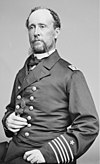 |
22 September 1874 | 1 July 1878 | Christopher R. P. Rodgers | — | Served in the Mexican–American War, the Civil War, as President of the United States Naval Institute, and Commander-in-Chief of the Pacific Squadron. | [a][12][13] |
| 9 |  |
1 July 1878 | 2 August 1879 | Foxhall A. Parker | — | Executive officer of the navy yard at Washington, D.C. During the Civil War, he worked to protect Alexandria, Virginia after the First Battle of Bull Run. Had charge of several gunboats, a battery at Fort Sumter, and later the Potomac Flotilla. A founder of the United States Naval Institute. | [a][14] |
| 10 |  |
2 August 1879 | 13 June 1881 | George Balch | — | Commanded the Pawnee during the Civil War, Governor of the Philadelphia Naval Asylum, on the Light House Board, commander of the Pacific Squadron. | [a][15] |
| 11 |  |
13 June 1881 | 14 November 1881 | Christopher R. P. Rodgers | — | Served in the Mexican–American War, the Civil War, as President of the United States Naval Institute, and Commander-in-Chief of the Pacific Squadron. | [a][12][13] |
| 12 |  |
14 November 1881 | 9 September 1886 | Francis M. Ramsay | 1856 | Chief of the Navy Bureau of Navigation, Fleet Captain, South Atlantic Squadron, commanding officer of Guerriere, Ossipee, Lancaster, Boston, and Trenton and at Boston and New York as commandant of the Navy Yards. | [a][16] |
| 13 | 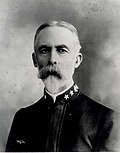 |
9 September 1886 | 13 June 1890 | William Thomas Sampson | 1861 | Led the Flying Squadron to victory in the Battle of Santiago de Cuba during the Spanish–American War. | [a][17] |
| 14 | — | 13 June 1890 | 15 November 1894 | Robert L. Phythian | 1856 | First superintendent of the New York Nautical School and later superintendent of the U.S. Naval Observatory. | [a][18][19] |
| 15 |  |
15 November 1894 | 15 July 1898 | Philip H. Cooper | 1863 | Commander-in-Chief of the United States Asiatic Fleet, commander of the USS Swatara | [a][20] |
| 16 |  |
15 July 1898 | 15 March 1900 | Frederick V. McNair | 1857 | Superintendent of the Naval Observatory (1890-1892), Commander of the Asiatic Station (1895-1897), Served on the Atlantic blockade stations and Mississippi River patrols during the Civil War. | [a][21][22] |
| 17 |  |
15 March 1900 | 6 November 1902 | Richard Wainwright | 1868 | Fought in Spanish–American War,commanded American forces during the Santo Domingo Affair, commanded the Second Division of the Great White Fleet. | [a][23] |
| 18 | 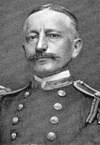 |
6 November 1902 | 1 July 1905 | Willard H. Brownson | 1865 | Commanded the USS Yankee during the Spanish–American War,Commander-in-Chief of the United States Asiatic Fleet, Chief of the Bureau of Navigation. | [b][24] |
| 19 |  |
1 July 1905 | 15 July 1907 | James H. Sands | 1863 | Served as Governor of the Naval Home Squadron, president of the Naval Retirement Board, Commandant of the Philadelphia Navy Yard, commanded the Coast Squadron. | [b][25][26] |
| 20 |  |
15 July 1907 | 10 June 1909 | Charles J. Badger | 1873 | Commander in Chief, Atlantic Fleet, commanded the USS Kansas, chairman of the General Board during World War I | [b][c] |
| 21 | — | 10 June 1909 | 15 May 1911 | John M. Bowyer | 1874 | Commanded the USS Columbia, USS Illinois, and USS Connecticut | [b][27] |
| 22 |  |
15 May 1911 | 7 February 1914 | John H. Gibbons | 1879 | Instructor at the Naval Academy, aide to the Assistant Secretary of the Navy, commanded the General Alava, Dolphin, Charleston, Louisiana, and Utah | [b][28][29] |
| 23 |  |
7 February 1914 | 20 September 1915 | William F. Fullam | 1877 | Commanded the USS Chesapeake and the USS Mississippi, awarded the Navy Cross, commanded the Reserve Force, Pacific Fleet, and Patrol Force. | [b][30] |
| 24 |  |
20 September 1915 | 12 February 1919 | Edward W. Eberle | 1885 | Third Chief of Naval Operations, commander of the Pacific Fleet, Naval Gun Factory, USS Washington and USS Pensacola | [b][31] |
| 25 |  |
12 February 1919 | 5 July 1921 | Archibald H. Scales | 1887 | Served in the Spanish–American War, commanded the USS Severn, USS Columbia, the Bureau of Equipment, USS Hartford, | [b][32] |
| 26 |  |
5 July 1921 | 23 February 1925 | Henry B. Wilson | 1881 | Commanded the USS Pennsylvania, Patrol Forces, Atlantic Fleet, U.S. Naval Forces, France, U.S. Atlantic Fleet and the U.S. Battle Fleet | [b][33] |
| 27 |  |
23 February 1925 | 16 June 1928 | Louis M. Nulton | 1889 | Commanded landing parties ashore during the United States occupation of Veracruz, the Battle Fleet, and the USS Pennsylvania. | [b][34][35] |
| 28 | 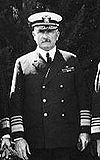 |
16 June 1928 | 1 May 1931 | Samuel S. Robison | 1888 | Founded a Naval Preparatory Academy in Pine Beach, New Jersey called Admiral Farragut Academy, commander of the United States Fleet. | [b] |
| 29 |  |
1 May 1931 | 18 June 1934 | Thomas C. Hart | 1897 | Commanded USS Chicago, Submarine Division 2, Submarine Division 5, USS Mississippi, Submarine Flotilla 3, Cruiser Division 6, United States Asiatic Fleet and ABDAFLOAT | [b] |
| 30 |  |
18 June 1934 | 1 February 1938 | David F. Sellers | 1894 | First person from New Mexico to graduate from the United States Naval Academy. Served in the Spanish–American War. Commanded the USS Stewart (DD-13), the cruisers Birmingham and Salem the battleship Wisconsin, and Agamemnon. Earned Navy Cross for service in World War I. Commanded the Maryland, the Special Service Squadron during the Nicaraguan Uprising, was Judge Advocate General of the Navy and Commander of the Battleships Battle Force, and the United States Fleet. | [b][36][37] |
| 31 |  |
1 February 1938 | 1 February 1941 | Wilson Brown | 1902 | Vice admiral, served in World War I and World War II, commanded USS Parker, USS California, Groton Sub Base and Task Force 11. Naval aide to four presidents. | [b][38][39] |
| 32 |  |
1 February 1941 | 31 January 1942 | Russell Willson | 1906 | Vice admiral, commanded Battleship Division 1. Inventor of the Navy Cipher Box. deputy commander in chief of the United States Fleet. | [b][40][41][42] |
| 33 | 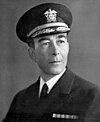 |
31 January 1942 | 16 August 1945 | John R. Beardall | 1908 | Rear admiral, naval aide to Franklin D. Roosevelt. Commanded the USS Vincennes. | [c][43] |
| 34 | 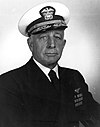 |
16 August 1945 | 15 January 1947 | Aubrey W. Fitch | 1906 | Admiral, commanded USS Terry, USS Yankton, USS Luce, USS Mahan, USS Arctic, USS Wright, USS Langley, NAS Hampton Roads, USS Lexington, NAS PensacolaPatrol Wing 2, Carrier Division 1, Aircraft, South Pacific Force. | [c][44] |
| 35 |  |
15 January 1947 | 28 April 1950 | James L. Holloway Jr. | 1919 | Admiral, Chief of Naval Personnel 1953–1957; commander in chief of all United States naval forces in the eastern Atlantic and Mediterranean from 1957 to 1959, commanded the 1958 American intervention in Lebanon. Key figure in establishment of the Naval Reserve Officer Training Corps. | [c][45][46] |
| 36 |  |
28 April 1950 | 4 August 1952 | Harry W. Hill | 1916 | Admiral, commander of USS Dewey, Wichita,Battleship Division Four, and the Fifth Amphibious Force. | [c][47] |
| 37 |  |
4 August 1952 | 12 August 1954 | C. Turner Joy | 1921 | Vice admiral, commanded the USS Litchfield, USS Louisville, a Naval Proving Ground and Naval Forces, Far East during the Korean War. | [c][48] |
| 38 |  |
12 August 1954 | 16 March 1956 | Walter F. Boone | 1921 | Admiral, fought in World War II, commanded USS Yorktown (CV-10), U.S. Naval Forces, Eastern Atlantic and Mediterranean (1956–1958) and U.S. Military Representative, NATO Military Committee (1958–1960). | [c][49][50][51] |
| 39 |  |
16 March 1956 | 27 June 1958 | William R. Smedberg III | 1926 | Vice admiral; commanded the USS Lansdowne, USS Hudson, USS Iowa, U.S. Second Fleet, the NATO Strike Fleet and chief of the Bureau of Naval Personnel | [c][52] |
| 40 |  |
27 June 1958 | 22 June 1960 | Charles L. Melson | 1927 | Vice admiral; served in World War II, the Korean War, and the Cold War, commanded the United States First Fleet, United States Taiwan Defense Command and President of the Naval War College. | [c][53] |
| 41 |  |
22 June 1960 | 18 August 1962 | John F. Davidson | 1929 | Commanded the submarines Mackerel and Blackfish during World War II. Later led the USS Albany, the Joint U.S. Military Mission for Aid to Turkey and the Pacific Fleet Training Command. | [c][54] |
| 42 |  |
18 August 1962 | 11 January 1964 | Charles Cochran Kirkpatrick | 1931 | Rear admiral, commanded the submarine USS Triton during World War II and served as chief information officer of the Navy. | [c][55] |
| 43 |  |
11 January 1964 | 12 June 1965 | Charles S. Minter Jr. | 1937 | Vice admiral; commanded the USS Albemarle; USS Intrepid, Fleet Air Wing, Pacific; Deputy Chief of Naval Operations (Logistics), and deputy chairman, NATO Military Committee. | [c][56] |
| 44 | 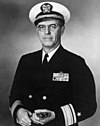 |
12 June 1965 | 22 June 1968 | Draper L. Kauffman | 1933 | Rear admiral, organized the first Navy Demolition Teams, commanded U.S. Naval Forces in the Philippines and the 9th Naval District | [c][57] |
| 45 | — | 22 June 1968 | 20 July 1968 | Lawrence Heyworth Jr. | 1943 | Rear admiral, executive officer of Fighter Squadron 61, finalist in selection of the Mercury Seven. | [c][58] |
| 46 |  |
20 July 1968 | 16 June 1972 | James F. Calvert | 1943 | Vice admiral, commanded the USS Trigger, USS Skate, Cruiser Destroyer Flotilla Eight, and the First Fleet. | [c][59] |
| 47 |  |
16 June 1972 | 1 August 1975 | William P. Mack | 1937 | Vice admiral, commanded the Seventh Fleet, author. | [c][60] |
| 48 |  |
1 August 1975 | 28 August 1978 | Kinnaird R. McKee | 1951 | Admiral, led the Navy's Nuclear Power Program, commanded Submarine Group 8 during the Yom Kippur War. | [c][61] |
| 49 |  |
28 August 1978 | 22 August 1981 | William P. Lawrence | 1951 | Vice admiral, commanded U.S. Third Fleet and Fighter Squadron 143. Was Chief of Naval Personnel. | [c][62] |
| 50 |  |
22 August 1981 | 31 August 1983 | Edward C. Waller | 1949 | Vice admiral | [c][63] |
| 51 |  |
31 August 1983 | 19 August 1986 | Charles R. Larson | 1958 | Admiral, led the United States Pacific Command. Served as the 51 and 55th superintendents. | [c][64] |
| 52 |  |
19 August 1986 | 18 August 1988 | Ronald F. Marryott | 1957 | President and CEO of the George C. Marshall Foundation, president and CEO of the Naval Academy Alumni Association, and President of the Naval War College. | [c][65] |
| 53 |  |
18 August 1988 | 15 June 1991 | Virgil L. Hill Jr. | 1961 | Rear admiral, president of Valley Forge Military Academy and College, led a $23 million fundraising push at the USNA. | [c][66] |
| 54 |  |
15 June 1991 | 1 August 1994 | Thomas C. Lynch | 1964 | Rear admiral, Director of the Navy Staff at the Pentagon, reassigned after cheating scandal. | [c][67][68] |
| 55 |  |
1 August 1994 | 4 June 1998 | Charles R. Larson | 1958 | Admiral, led the United States Pacific Command. Served as the 51 and 55th superintendents. | [c][64] |
| 56 |  |
4 June 1998 | 7 June 2002 | John R. Ryan | 1967 | Vice admiral, commanded Patrol Wing 10, Patrol Squadron 31, and Patrol Squadron 11. Chancellor of the State University of New York. | [c][69][70] |
| 57 |  |
7 June 2002 | 5 June 2003 | Richard J. Naughton | 1968 | Served in Gulf War, commanded Naval Strike and Air Warfare Center, NAS Fallon and Carrier Group FOUR/Carrier Striking Force. | [c][71][72][73] |
| 58 |  |
5 June 2003 | 1 August 2003 | Charles W. Moore Jr. | 1968 | Vice admiral; commander of U.S. Naval Forces, Central Command, the Fifth Fleet in Bahrain, and Deputy Chief of Naval Operations, Fleet Readiness and Logistics. | [c].[74][75] |
| 59 | 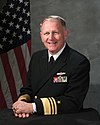 |
1 August 2003 | 8 June 2007 | Rodney P. Rempt | 1966 | Vice admiral; commander of USS Antelope, USS Callaghan, and USS Bunker Hill. President of the Naval War College. | [c][76] |
| 60 |  |
8 June 2007 | 3 August 2010 | Jeffrey Fowler | 1978 | Commanded Charlotte (SSN-766), Submarine Squadron Three, Navy Recruiting Command, Submarine Group 8; and Task Forces 164/69. | [c][77] |
| 61 |  |
3 August 2010 | 23 July 2014 | Michael H. Miller | 1974 | Commander USS John F. Kennedy (CV-67), USS Coronado (AGF-11), Carrier Strike Group Seven/Ronald Reagan Strike Group; directed White House Military Office. | [c][78] |
| 62 | 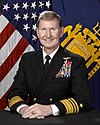 |
23 July 2014 | 26 July 2019 | Walter E. Carter Jr. | 1981[79] | Vice admiral, 54th President of the U.S. Naval War College, commanded Carrier Strike Group Twelve and Joint Enabling Capabilities Command, USJFCOM. | [79][80] |
| 63 |  |
26 July 2019 | 27 August 2023 | Sean Buck | 1983[81] | Vice admiral, chief of staff to the Director for Strategy, Plans, and Policy of the Joint Chiefs of Staff and led the U.S. Naval Forces Southern Command/U.S. 4th Fleet. | [81] |
| 64 |  |
27 August 2023 | 11 January 2024 | Fred Kacher | 1990 | Rear admiral, former vice director for operations of the Joint Chiefs of Staff; Acting Superintendent due to delay in confirmation of successor. | [82] |
| 65 |  |
11 January 2024 | Incumbent | Yvette M. Davids | 1989 | Vice admiral, commanded Naval Surface Forces and Carrier Strike Group 11. | [83] |
A "—" in the class year column indicates a superintendent who is not an alumnus of the academy.
See also
References
Bibliography
Wikiwand - on
Seamless Wikipedia browsing. On steroids.
